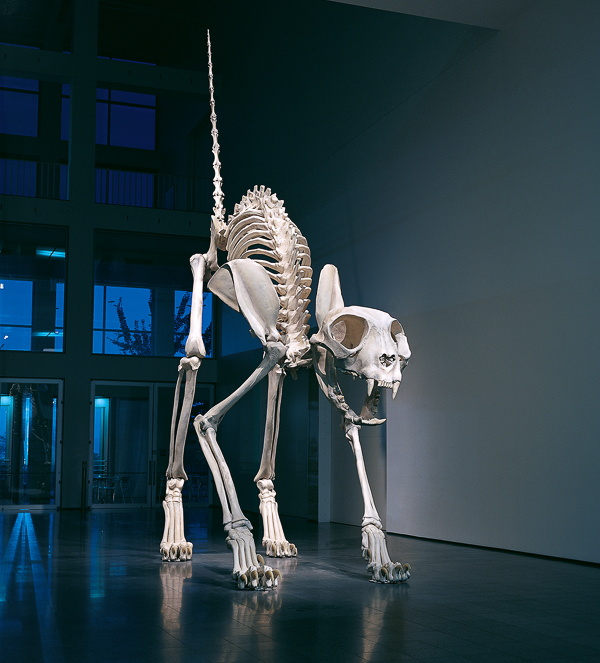
Up next in our series of interviews with notable, in-the-know locals: Michael Darling, chief curator at The Museum of Contemporary Art and curator of Felix, the 26-foot-tall sculpture of a cat skeleton that will be on view from October 14 through April 8 at the MCA.
So, who is Felix and how did he end up at the MCA?
Felix is a 26-foot-tall sculpture of a cat skeleton that artist Maurizio Cattelan made for the MCA at our invitation in 2001. It became an iconic piece both in our collection and within the artist’s career.
Why bring Felix back for the MCA’s 50th anniversary?
It’s one of those pieces that generates a lot of conversation. It has such amazing presence and energy, but it’s also so surprising for visitors. You don’t expect to see something that’s at the scale of a T. rex skeleton in a contemporary art museum. Even now, we’re not even finished setting it up, and I’m already seeing visitors being attracted to it and trying to figure out what it is.
Why do you think he’s so appealing?
It’s surprising, for sure, but there’s also joy and humor. It’s slightly confrontational, because right when you walk in the doors of the museum you see a massive cat looking right at you. There’s a bit of a jolt or shock that people get when they see it.
Tell me a little bit about the Maurizio Cattelan, the artist who made him, and how Felix fits into his larger body of work.
He’s known for very realistic, shocking depictions of things that you probably wouldn’t see in nature. One of his famous pieces, for example, is a sculpture of Pope John Paul II being struck by an asteroid. There’s always this double-take that happens with his best pieces. I think that’s where Felix fits in. At first you’re like, hey, this is a dinosaur—but at second glance you realize it’s a cat. This sort of second guessing is a signature of his work.
Why a cat?
In this case, there’s the context of Sue at the Field Museum. I can imagine it was interesting for Maurizio that the T. rex had a name, and that he wanted our cat to be named Felix after the famous cat. So, there’s a logic there. But also, as far as we know, cats didn’t get that large in prehistoric time. To take a small household animal and make it so large was also an inversion of logic. The absurdity of it and the surprise factor is what makes this such an extraordinary piece.
How do you hope visitors will respond to the 50th anniversary exhibition?
I think when visitors see Felix, Jeff Koons’s Rabbit, and all our other iconic pieces, it will be a great reminder of all the unique pieces the MCA has collected over the years. We hope they make people feel proud to have them in Chicago.
Who wins in a fight: Felix or Sue?
I would say Felix. Well, not win—but he’d at least be able to run away and jump to another location to avoid the fight. I’m sure one of the paleontologists at the Field Museum would have a much more informed answer.


